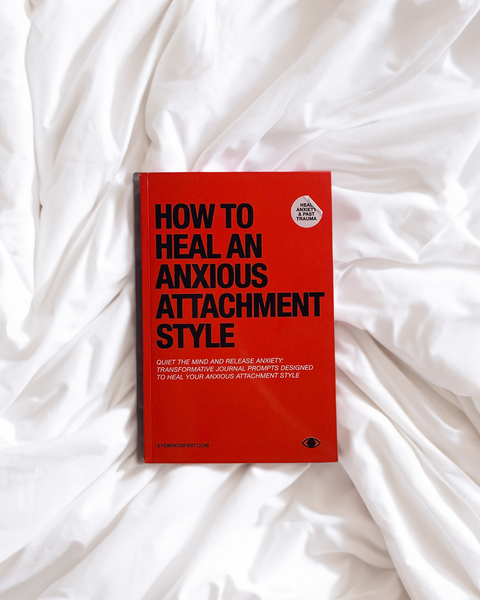
Ah, dating with anxious attachment style can be painfu—where every text (or lack thereof) can feel like the end of the world and like you're being abandoned. It really is an emotional rollercoaster but your attachment style isn't set in stone. With the right tools and understanding, you can still find your way to a healthy, fulfilling relationship.
What is Anxious Attachment Style?
Anxious attachment style is a term that stems from Attachment Theory, which suggests our early childhood experiences with caregivers shape how we relate to others in adulthood. If you're someone with an anxious attachment style, it likely means that as a child, you experienced inconsistent levels of attention and responsiveness from your parents or guardians. This inconsistency taught you to be hyper-vigilant and overly concerned about your relationships, fearing that love might be withdrawn at any moment.
How Anxious Attachment Style is Developed
Anxious attachment style often emerges from early childhood experiences where emotional needs were inconsistently met, leading to heightened anxiety in relationships. This inconsistency in caregiving can result from various factors, including emotional neglect, over-involved parenting, parental mental health issues, economic instability, academic pressure, and unresolved past relationships.
Children who feel unseen or unheard unless they "act out" might learn to associate heightened emotions or dramatic behaviors with receiving attention. Over-involved or "helicopter" parenting can smother a child's natural development of independence, making them feel that they constantly need their parent's approval or guidance. If a parent was dealing with their own emotional or psychological issues, they might have been inconsistent in their emotional responses towards their child, fostering anxious feelings.
In adult relationships, past betrayals might haunt you, leading to constant anxieties about your partner's fidelity, honesty, or commitment. This isn't just a thought; it's a visceral feeling, a knot in your stomach that tightens whenever there's an ambiguous text message or an unexplained absence. These constant anxieties can become a self-fulfilling prophecy, causing you to act out or withdraw in ways that may strain the relationship, thereby reinforcing your anxious attachment tendencies.
9 Tips for Dating with Anxious Attachment Style
- Understand Your Attachment Style: Knowledge is power. Understanding your attachment style is the first step toward growth. It offers you insights into why you feel what you feel and empowers you to take steps towards more secure attachments.
- Communicate Your Needs: It's crucial to communicate your needs to your partner clearly and effectively. Remember, it's okay to need more reassurance and it's important to express it in a way that your partner understands.
- Practice Self-soothing: Learning to manage your anxiety independently is vital. Techniques such as mindfulness, meditation, and breathwork can be incredibly helpful in moments of distress.
- Seek Therapy: Sometimes, the roots of anxious attachment run deep. Therapy can provide a safe space to explore these issues, offering tools and strategies to manage anxiety and build healthier relationships.
- Build a Support Network: Don't put all your emotional eggs in one basket. Cultivating a strong network of friends and family can provide additional support and reassurance.
- Set Healthy Boundaries: It's easy to lose yourself in the whirlpool of anxious attachment. Setting clear boundaries helps protect your emotional well-being and fosters a healthier relationship dynamic.
- Focus on Self-improvement: Personal growth and self-improvement activities can boost your confidence and reduce relationship anxiety. Engage in activities that make you feel good about yourself.
- Practice Trust: Letting go of control and choosing to trust your partner can be challenging but rewarding. Remember, trust is a fundamental component of any healthy relationship.
- Be Mindful of Your Triggers: Understanding what triggers your anxiety in relationships can help you manage your reactions better. This awareness allows you to pause and respond rather than react impulsively.
How to Heal an Anxious Attachment Style
If you want to dive a little deeper into your attachment style our journal and workbook How to Heal an Anxious Attachment Style can help. You’ve probably never tried a journal quite like this before so here’s what to expect:
Together, we'll dive into how you developed your anxious attachment style, examine how your subconscious programming and self concept has been impacting your relationships, practice shadow work to heal past trauma and learn how to reprogram the mind through visualization and affirmations.
Think of it like a trusty friend who’s great at listening and has some cool insights that you've never thought of before. It’s here to help you peel back the layers of your past and build a stronger, wiser you.
- 150+ Journal Prompts & Exercises
- Understanding & Healing Anxious Attachment.
- Techniques to Rewire Your Subconscious Mind
- Strategies to Quiet Mental Noise
- Neuroscience & Tools to Envision Your Desired Future

Final Thoughts
Dating with an anxious attachment style might feel like trying to navigate a ship through a storm, but it doesn't have to be a solo journey.
Equip yourself with understanding, patience, and the right tools, and you'll find that even the most turbulent waters can lead to the calmest harbors. Remember, your attachment style does not define you or your capacity for love and connection. With effort and self-awareness, you can forge relationships that are both fulfilling and secure.



